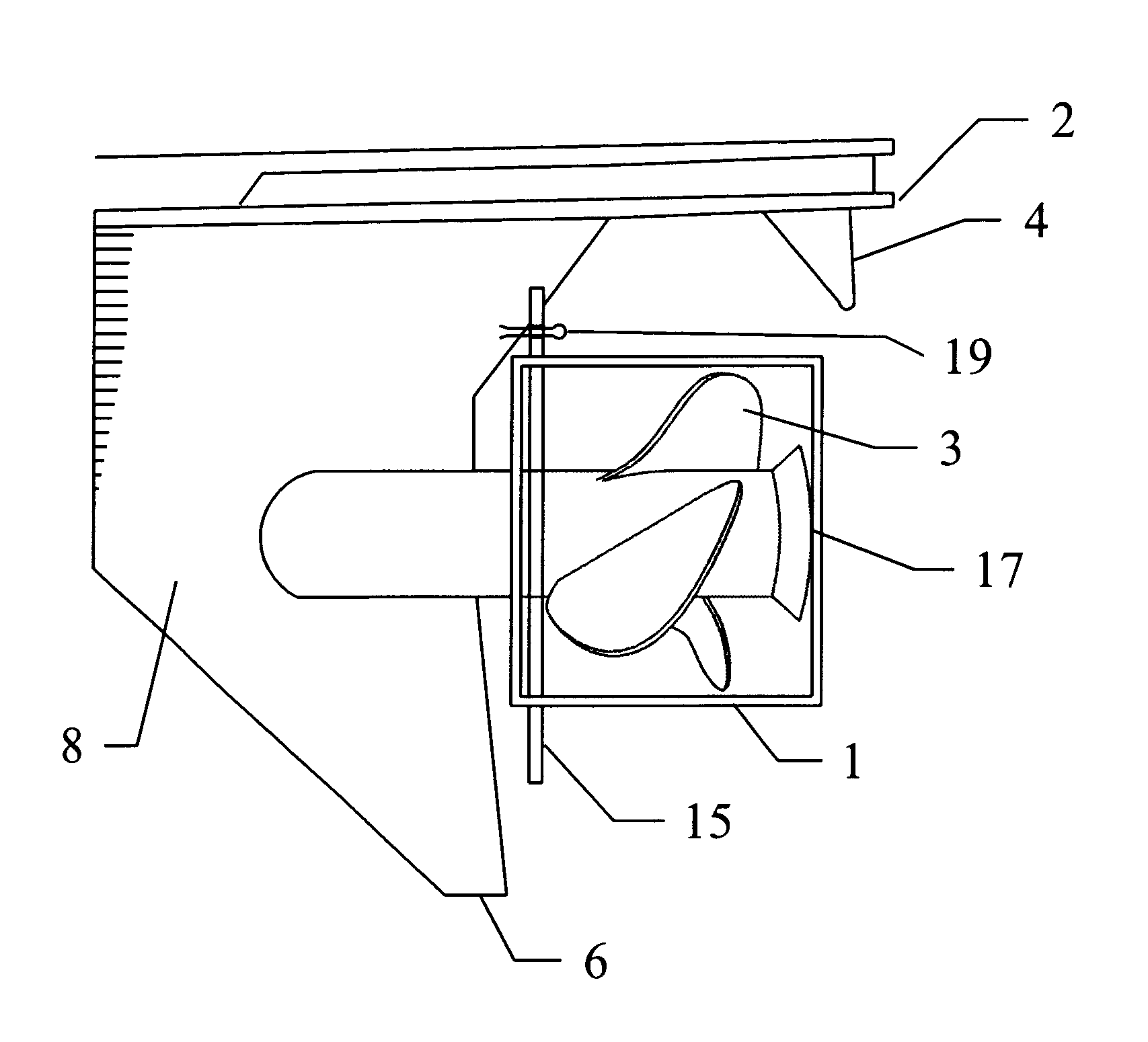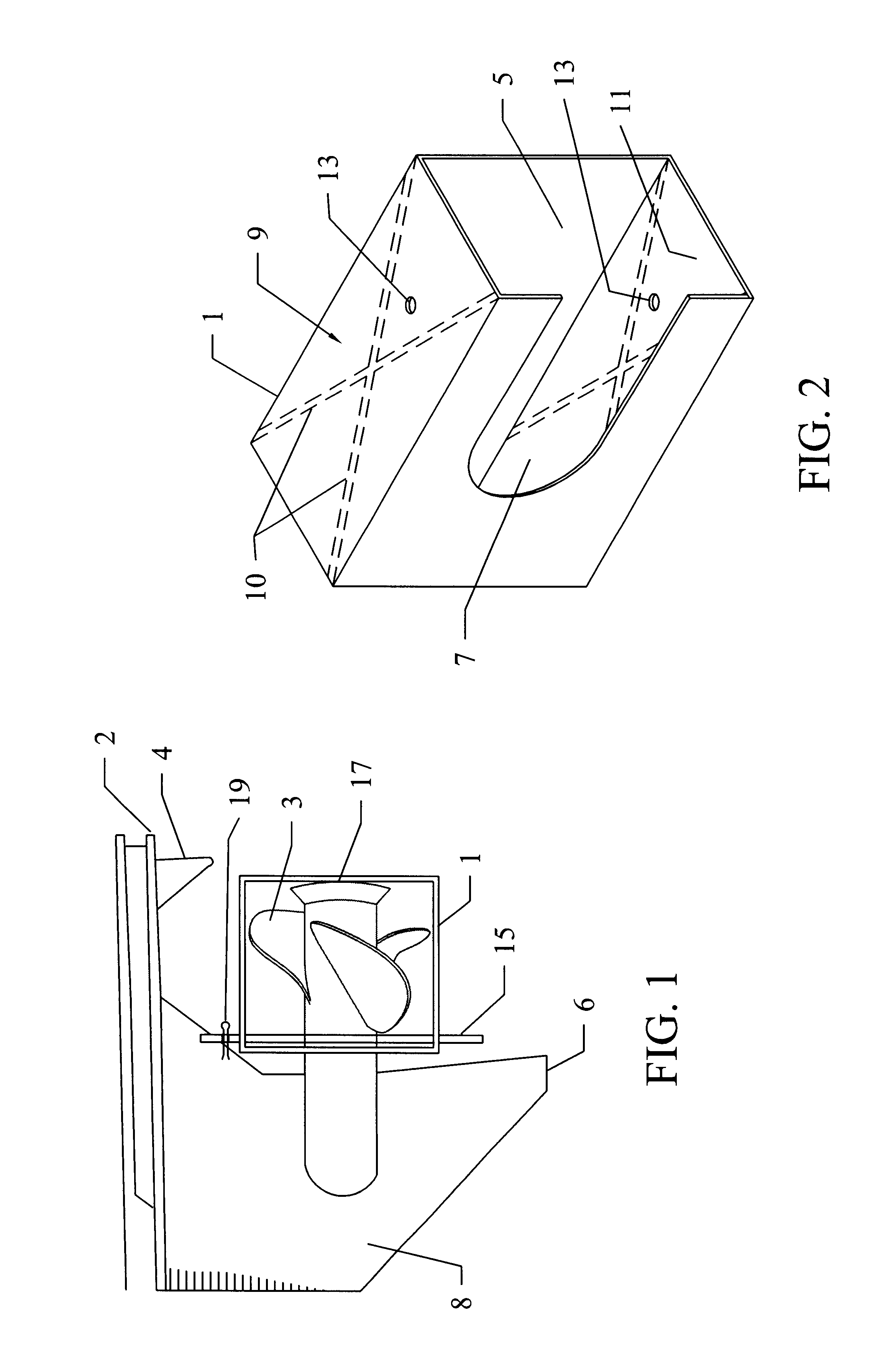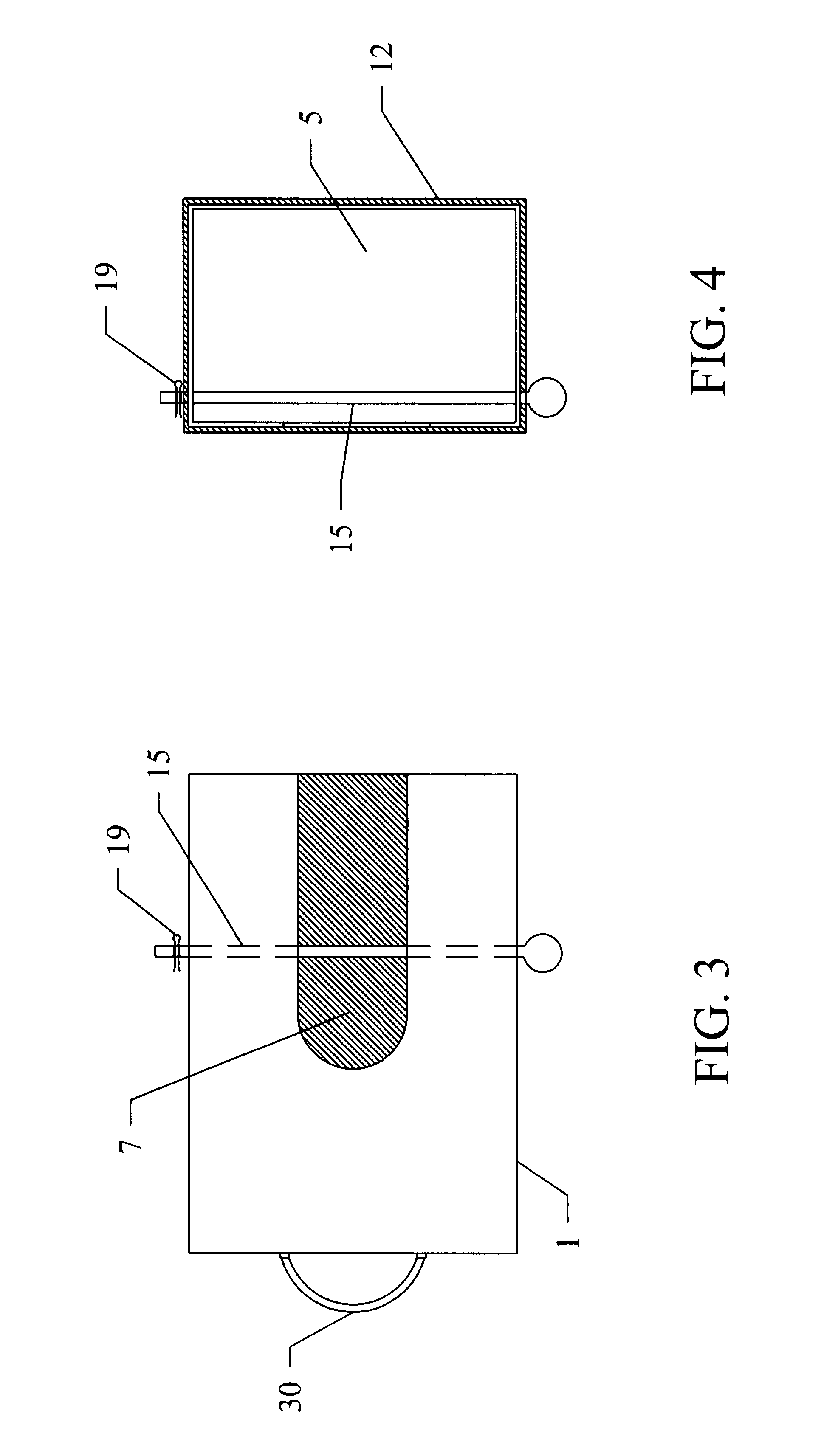Propeller protector slipper
a technology for protecting slippers and propeller blades, applied in the field of propeller protectors, can solve the problems of affecting the safety of passengers, etc., and achieving the effects of preventing slippage, preventing slippage, and preventing slippag
- Summary
- Abstract
- Description
- Claims
- Application Information
AI Technical Summary
Benefits of technology
Problems solved by technology
Method used
Image
Examples
Embodiment Construction
The present invention provides a propeller protector slipper to be applied to propellers of inboard and / or outboard motors. In a preferred embodiment, the propeller protector slipper according to the subject invention includes a housing unit to envelop a propeller and a means for securing the housing unit to maintain attachment over the propeller. Advantageously, the housing unit of the subject invention is safely and easily secured over a propeller by applying minimal longitudinal force to either the port or starboard side surface opposite the cut away side.
The terms "aft," "forward," "starboard," and "port," as used herein, are common nautical terms that identify various locations in relation to a nautical vessel.
The term "anticavitation plate" as used herein refers to a plate located above the propeller blades to prevent surface air from entering the blade area.
The term "trim tab" as used herein refers to one plane installed on the lower surface of the anticavitation plate of a b...
PUM
 Login to View More
Login to View More Abstract
Description
Claims
Application Information
 Login to View More
Login to View More - R&D
- Intellectual Property
- Life Sciences
- Materials
- Tech Scout
- Unparalleled Data Quality
- Higher Quality Content
- 60% Fewer Hallucinations
Browse by: Latest US Patents, China's latest patents, Technical Efficacy Thesaurus, Application Domain, Technology Topic, Popular Technical Reports.
© 2025 PatSnap. All rights reserved.Legal|Privacy policy|Modern Slavery Act Transparency Statement|Sitemap|About US| Contact US: help@patsnap.com



